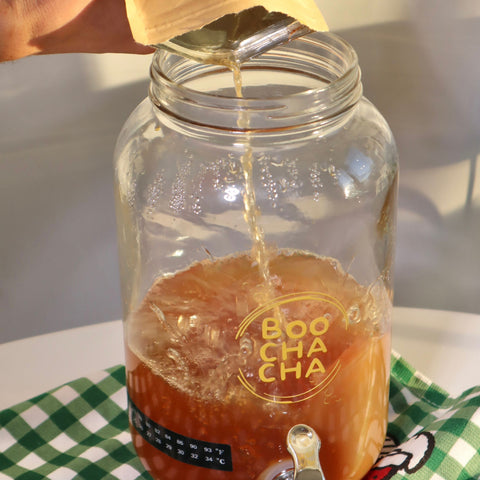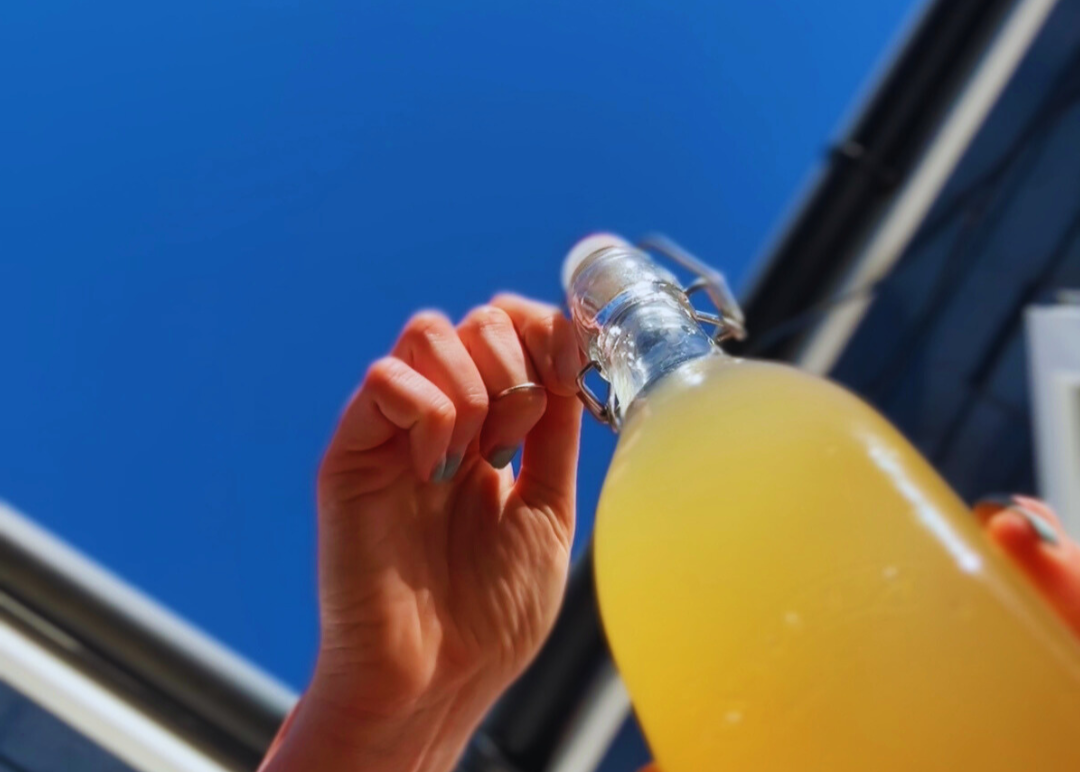


1. Cleanliness is Crucial
The foundation of safe Kombucha brewing is cleanliness. Everything that comes into contact with your Kombucha must be clean. This includes jars, bottles, funnels, and even your hands.
Use hot water and dish soap to wash your equipment, and make sure to rinse all suds really well before you get brewing.
2. Quality Ingredients and SCOBY
The quality of your ingredients can significantly impact the safety and taste of your Kombucha.
Use high quality tea, to get the best flavour into your Kombucha, and make sure to source a SCOBY with plenty of powerful starter liquid. Your SCOBY should always come with liquid.
Check out this blog on how to get a SCOBY from a friend, and this one on how you can grow your own!
Of course, all of our starter kits come with great quality, powerful and juicy SCOBYs, to make sure your Kombucha is perfect right from the first brew. A healthy SCOBY is the key to great Kombucha.

3. Consistent Brewing Conditions
Kombucha thrives in a warm environment, typically best between 24-29 degrees Celsius.
This is why starting in the summer can give you a helping hand. Using a heat pad can be useful for anyone starting in the winter time, or keeping your fermentation jar in an airing cupboard, near a radiator, on top of a fridge, but not in direct sunlight. For the first couple of brews it is super important to keep your brew at 20 degrees Celsius as a minimum.
We include an adhesive thermometer in all of our starter kits to help you keep an eye on the temperature.
Consistency is the key, as large fluctuations in temperature can hinder the fermentation process and potentially invite mould or harmful bacteria.
4. Monitoring pH Levels
The acidity of Kombucha is a natural defence against harmful microorganisms.
Measuring the pH is easy to do using test strips or a digital meter, but it isn't entirely necessary. You can manage the pH of your brew by making sure to always leave enough Kombucha from the previous batch in your fermenting jar with your SCOBY, to act as the starter liquid for your next refill of sweet tea.
For reference, the pH of your brew must always be below 4.5 to create an environment that is safe for the fermentation.
5. Sensory Checks
Look and smell are both powerful tools in determining the safety of your Kombucha.
Before tasting or bottling, inspect your brew for any signs of mould, which always appear as blue or green fuzzy spots on the surface, see our SCOBY gallery here to see how obvious it is if your SCOBY has grown mould.
The smell should be vinegary but not unpleasant, and your Kombucha should taste a little tart, slightly sweet, with a light effervescent feel.
If anything seems amiss, we offer a lifetime of brewing support with all of our Kombucha Starter Kits and encourage all our customers to reach out with any queries, but if you're going alone, head to our FAQ's and see if there anything there to help.
If mould grows on your SCOBY, the whole lot must be discarded. Make sure to clean all equipment well before starting again too.

The Benefits of Home-Brewed Kombucha
Aside from the satisfaction of crafting your own supply of delicious home brewed Kombucha, drinking this regularly offers several other benefits.
It’s cost-effective, totally customisable to your favourite flavours (see our Kombucha Recipe Club here for inspiration), and you have complete control over the ingredients and fermentation time, allowing you to adjust the taste to your preference.
Moreover, brewing Kombucha at home is a sustainable practice, reducing the need for mass production style waste, packaging, transportation, and energy usage.


